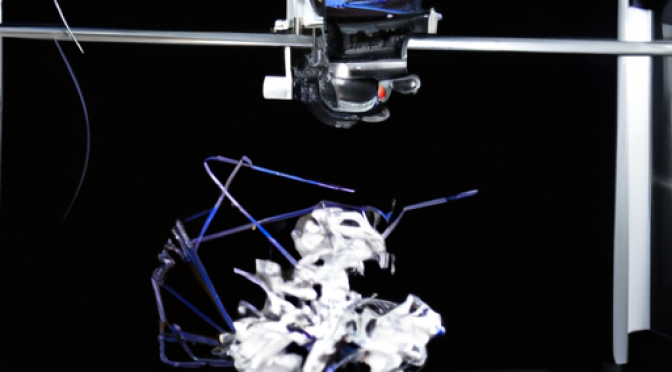Introduction
Advanced manufacturing processes often involve complex printing tasks that require high precision and accuracy. However, errors can occur during these processes, leading to defective products and increased costs. Machine learning algorithms have emerged as a powerful tool to predict and correct printing errors in real-time, improving the overall efficiency and quality of advanced manufacturing.
Predicting Printing Errors
Machine learning algorithms can analyze vast amounts of data collected during the printing process to identify patterns and trends associated with printing errors. By training the algorithms on a dataset of known errors and their corresponding features, such as printing parameters, material properties, and environmental conditions, the algorithms can learn to recognize the signs of potential errors before they occur.
These algorithms utilize various techniques, such as supervised learning, unsupervised learning, and reinforcement learning, to make accurate predictions. Supervised learning algorithms are trained on labeled data, where each data point is associated with a known error or non-error outcome. Unsupervised learning algorithms, on the other hand, analyze unlabeled data to identify hidden patterns and anomalies. Reinforcement learning algorithms learn through trial and error, receiving feedback on their predictions and adjusting their models accordingly.
Real-time Error Correction
Once a printing error is predicted, machine learning algorithms can also be used to correct the error in real-time. By continuously monitoring the printing process and comparing it to the predicted error patterns, the algorithms can make adjustments to the printing parameters, material flow, or other relevant factors to prevent or minimize the occurrence of errors.
These algorithms can be integrated into the control systems of advanced manufacturing machines, allowing for immediate adjustments to be made during the printing process. This real-time error correction capability significantly reduces the need for manual intervention and improves the overall efficiency and productivity of the manufacturing process.
Benefits and Challenges
The use of machine learning algorithms for predicting and correcting printing errors in real-time offers several benefits. Firstly, it helps to minimize the production of defective products, reducing waste and associated costs. Secondly, it improves the overall quality and consistency of the manufactured products, enhancing customer satisfaction. Thirdly, it enables manufacturers to optimize their printing processes, leading to increased productivity and competitiveness.
However, there are also challenges associated with implementing machine learning algorithms in advanced manufacturing. One challenge is the availability and quality of data. Sufficient and accurate data is required to train the algorithms effectively. Additionally, the algorithms need to be continuously updated and refined as new printing technologies and materials are introduced.
Conclusion
Machine learning algorithms have revolutionized the way printing errors are predicted and corrected in real-time during advanced manufacturing processes. By leveraging the power of data analysis and pattern recognition, these algorithms enable manufacturers to improve the efficiency, quality, and productivity of their printing operations. As technology continues to advance, the integration of machine learning algorithms in advanced manufacturing is expected to become even more prevalent, leading to further advancements in the field.

